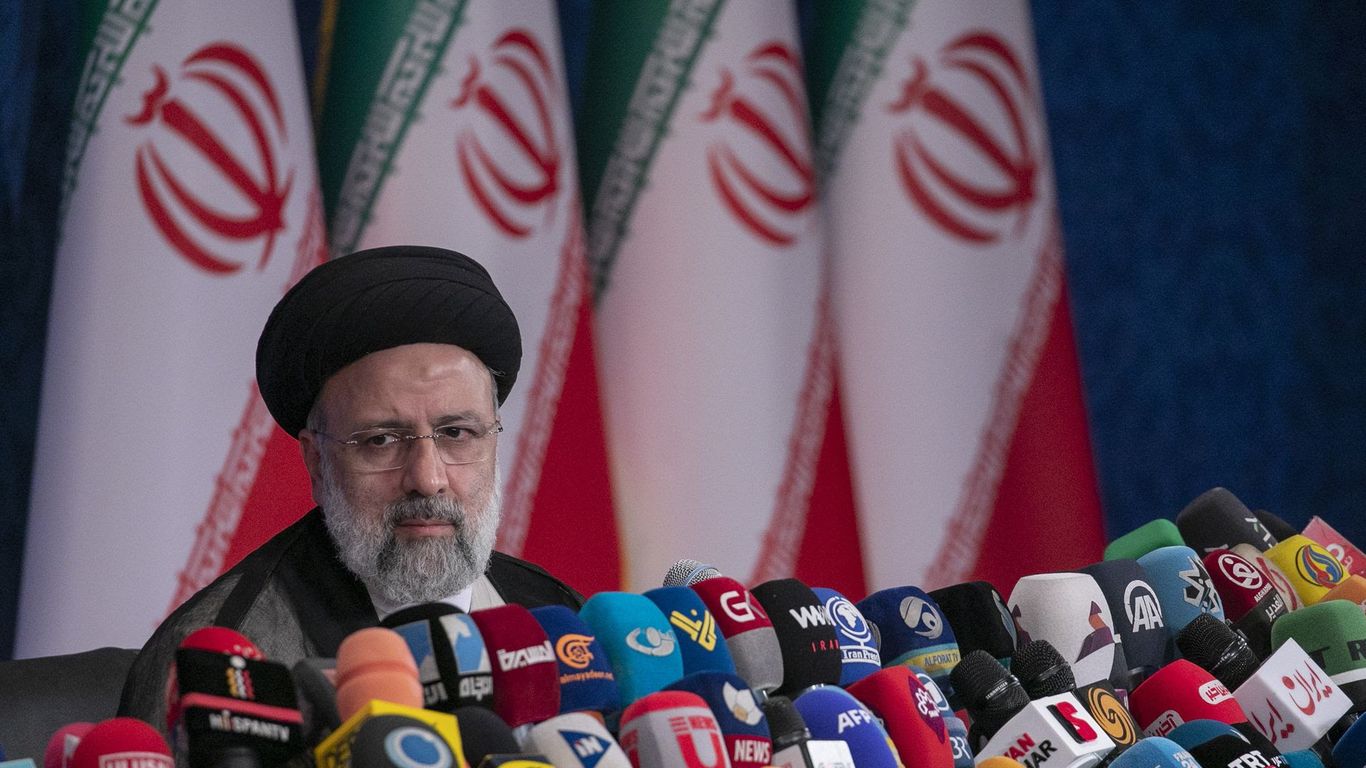The Biden administration is grappling with a new dilemma as nuclear negotiations with Iran remain frozen: whether more pressure on Iran would help push the Iranians back to the 2015 deal, or lead Iran to escalate its nuclear program, U.S. and Israeli officials told Axios.
Why it matters: The Iranian nuclear program has made significant advances in recent months that will be difficult to roll back — and that could potentially undercut the benefits of salvaging the 2015 accord, particularly if a deal isn’t reached soon.
Driving the news: Israeli Foreign Minister Yair Lapid told National Security adviser Jake Sullivan in their meeting at the White House on Tuesday that Israel feared Iran was becoming a “nuclear threshold state.”
- Lapid told Sullivan that, given the current stalemate, there is a need for an alternative plan to the nuclear agreement.
Behind the scenes: This dilemma was at the center of the last round of U.S.-Israeli strategic talks about Iran’s nuclear program last week, Israeli officials told Axios.
- The Israeli side pushed the U.S. team, headed by Sullivan, to put more pressure on Iran through additional sanctions, sabotage operations against the nuclear program, and warnings that a military option could be on the table if Iran continues its nuclear provocations, the Israeli officials said.
- The U.S. side agreed on the need to counter Iran’s latest actions but said it was concerned such steps could generate Iranian backlash. The sabotage attempts that damaged Iran’s advanced centrifuge facility, which Iran attributed to Israel, led the Iranians to escalate their program and provided a pretext to limit the access of UN inspectors, sources briefed on the talks said.
- The Israelis then asked the U.S. side whether it had a deadline for ending the current limbo and taking any steps against Iran, Israeli officials told Axios.
- The U.S. side said it hopes growing pressure on Iran from Russia and Iran’s struggling economy could lead the Iranians back to the nuclear deal.
- One of the decisions in the talks was to form joint working groups to assess the Iranian economy, identify pressure points and also identify which steps against Iran could be counterproductive.
What they’re saying: An Israeli official said the U.S. dilemma is real and Israel understands it. “We know they are looking for the right balance but we want to know how long it is going to take,” he said.
- A senior U.S. official told Axios: “Given the pressure that Iran is under, we want to see what steps will be effective and what steps might be counterproductive. Thus, we’re engaged in detailed, strategic conversations with partners and allies about what steps will truly lead us closer to our shared objective – ensuring that Iran can never develop a nuclear weapon.”
- But, U.S. envoy for Iran Rob Malley gave a more pessimistic assessment of where the nuclear talks are during a virtual event today at the Carnegie Endowment.
- Malley said every day that passes signals to the U.S. that the new Iranian government doesn’t want to go back to full compliance with the 2015 nuclear deal.
- “We have to prepare for a world where Iran doesn’t have constraints on its nuclear program and we have to consider options for dealing with that. This is what we are doing while we hope they do go back to the deal,” Malley said.
What’s next: Malley said he will travel in the coming days to Saudi Arabia, UAE and Qatar to discuss the Iranian issue.
